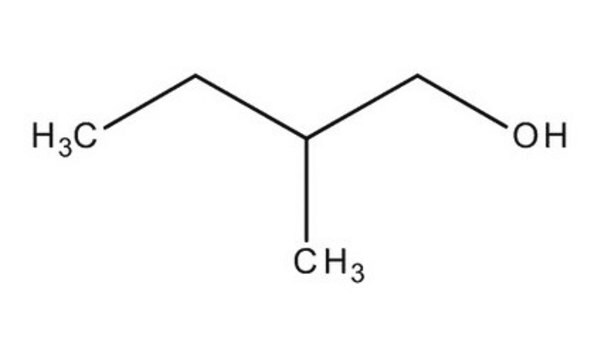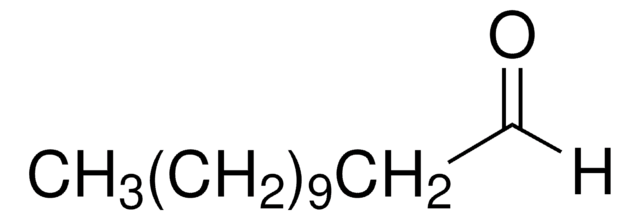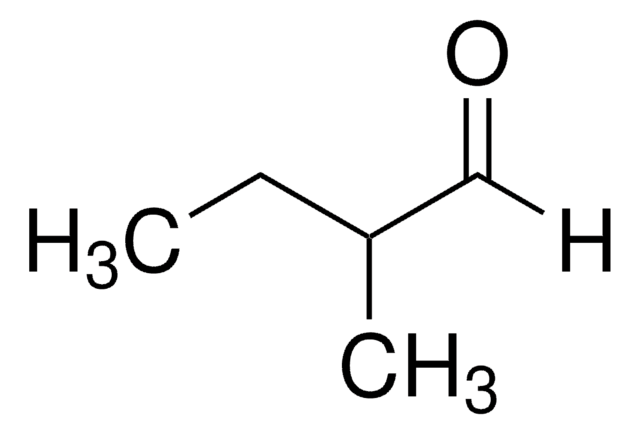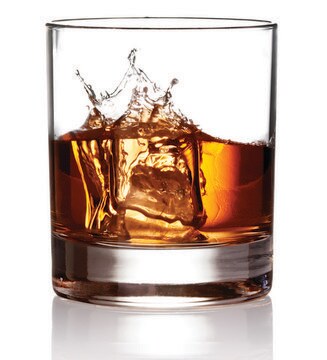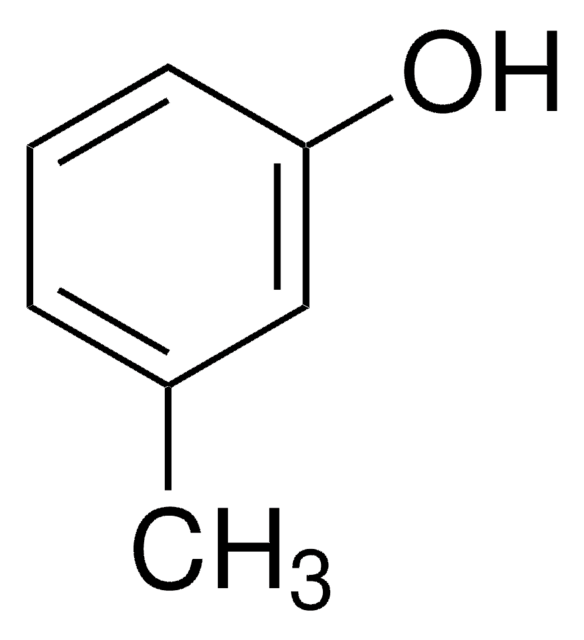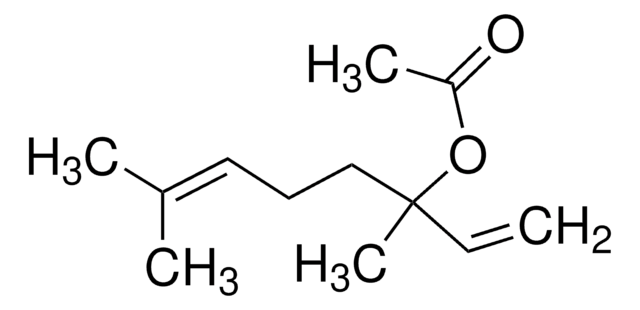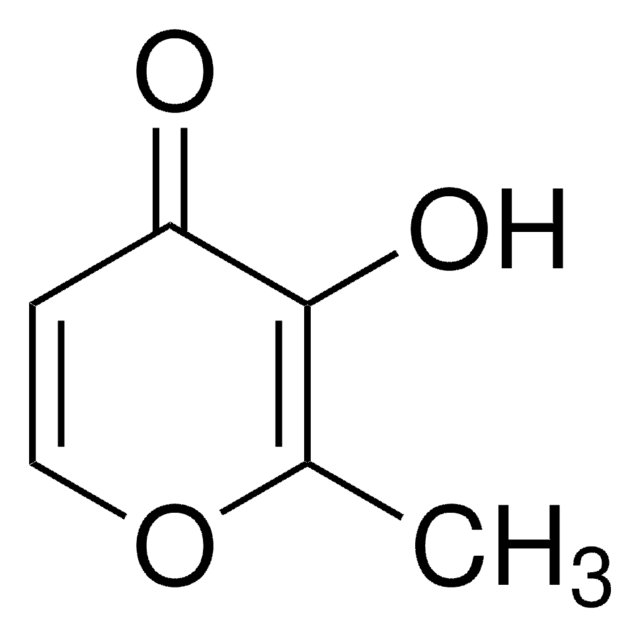Key Documents
W399809
2-Methyl-1-butanol
≥99%, FG
Synonim(y):
2-methylbutan-1-ol, 2-methylbutanol, 2-methylbutyl alcohol
About This Item
Polecane produkty
pochodzenie biologiczne
synthetic
klasa czystości
FG
Fragrance grade
Halal
Kosher
agency
follows IFRA guidelines
meets purity specifications of JECFA
zgodność regionalna
EU Regulation 1223/2009
EU Regulation 1334/2008 & 178/2002
FDA 21 CFR 110
gęstość pary
3 (vs air)
Próba
≥99%
temp. samozapłonu
725 °F
granice wybuchowości
10 %
współczynnik refrakcji
n20/D 1.410±0.002 (lit.)
tw
130 °C mmHg (lit.)
gęstość
0.819 g/mL at 20 °C (lit.)
0.815 g/mL at 25 °C (lit.)
Zastosowanie
flavors and fragrances
Dokumentacja
see Safety & Documentation for available documents
alergen pokarmowy
no known allergens
alergen zapachowy
no known allergens
Organoleptyczne
alcohol; whiskey; wine-like
ciąg SMILES
CCC(C)CO
InChI
1S/C5H12O/c1-3-5(2)4-6/h5-6H,3-4H2,1-2H3
Klucz InChI
QPRQEDXDYOZYLA-UHFFFAOYSA-N
Szukasz podobnych produktów? Odwiedź Przewodnik dotyczący porównywania produktów
Powiązane kategorie
Zastosowanie
<li><strong>Comparative study of two indoor microbial volatile pollutants, 2-Methyl-1-butanol and 3-Methyl-1-butanol, on growth and antioxidant system of rice (Oryza sativa) seedlings.</strong>: This article evaluates the impact of 2-methyl-1-butanol and its structural isomer on the growth and stress responses of rice seedlings, offering insights into the environmental and biological effects of these compounds (Nguyen DK et al., 2024).</li>
</ul>
Hasło ostrzegawcze
Danger
Zwroty wskazujące rodzaj zagrożenia
Zwroty wskazujące środki ostrożności
Klasyfikacja zagrożeń
Acute Tox. 4 Inhalation - Eye Dam. 1 - Flam. Liq. 3 - Skin Irrit. 2 - STOT SE 3
Organy docelowe
Respiratory system
Kod klasy składowania
3 - Flammable liquids
Klasa zagrożenia wodnego (WGK)
WGK 1
Temperatura zapłonu (°F)
108.5 °F - closed cup
Temperatura zapłonu (°C)
42.5 °C - closed cup
Środki ochrony indywidualnej
Eyeshields, Faceshields, Gloves, type ABEK (EN14387) respirator filter
Wybierz jedną z najnowszych wersji:
Masz już ten produkt?
Dokumenty związane z niedawno zakupionymi produktami zostały zamieszczone w Bibliotece dokumentów.
Klienci oglądali również te produkty
Protokoły
-Butanol; 2-Methyl-2-butanol; 2-Methyl-1-butanol; 3-Pentanol; 1-Butanol; 2-Methyl-1-propanol; 2-Pentanol, 98%; 3-Methyl-1-butanol; 1-Propanol
Nasz zespół naukowców ma doświadczenie we wszystkich obszarach badań, w tym w naukach przyrodniczych, materiałoznawstwie, syntezie chemicznej, chromatografii, analityce i wielu innych dziedzinach.
Skontaktuj się z zespołem ds. pomocy technicznej

